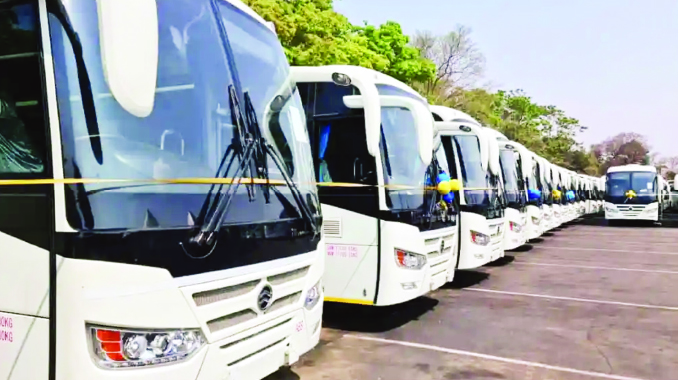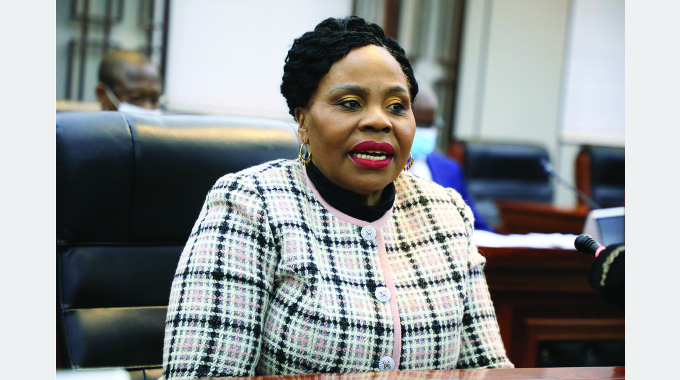EDITORIAL COMMENT: Duty free buses will help ease transport woes

Among other things the latest census figures reveal the true extent of the sort of the bus fleet Zimbabwe needs to provide decent public transport, a bus fleet that needs to be several times larger than the present one.
So besides the regular import of batches of buses for Zupco, and the decision to regulate and mobilise the private bus fleets to handle many routes, the gazetting of the modalities this week to implement the Government decision to allow a reasonable number of buses to be imported duty free for the private sector was needed to accelerate the expansion of the fleet.
The census showed that first there are the inter-city routes, and with a population of 15,1 million people there are obviously more people who need to travel around Zimbabwe, and between the towns and cities of Zimbabwe, so that fleet needs to rise in numbers, although at the moment, with the stress placed on it by both Zupco and private companies, it is coping with present demand.
But far importantly, when we look at calculating the size of the sort of bus fleet we need, and when we want to calculate the deficiencies, is the dramatic rise in urban population. This is especially true of the greater Harare area with its population so very spread out and with so few people living anywhere near where they need to work every day, thanks to the seriously deficient town planning of the colonial era and what has happened since.
We need to realise it is not just the rise in the urban population, but the expansion in the size of the larger urban centres.
Most rural people live on the farms where they work, and while they could usefully use some local services to go to the nearest town and nearest hospital, these are not daily trips. So better services are needed in rural areas but the demand is not that great.
Small towns are fairly similar, with most people living within a short walk of their work place.
Most people, even in a provincial capital like Marondera Municipality, can walk to work with almost everyone living less than 30 minutes on foot from their employment or business.
Bulawayo, with its rather good town planning and in recent decades low population growth, sees possibly half its population within that 30 minute walk of employment although demand for public transport is rising and as water and other restraints are sorted out likely to see a population boom.
Gweru and Mutare are on the cusp of where half the people at least need public transport daily.
But the serious demand is in Harare, with more than 2,6 million in the greater urban area and holding 45 percent of the entire urban population.
Commutes of 10km in each direction are considered very short and greater than 20km in each direction are ever more common.
Both the rise in population since the early 1980s and the spreading of that population make the combined fleets of around 1 000 buses for Harare and Chitungwiza in the early 1980s far too small for today.
Almost certainly a fleet twice the size is needed, for a start, and it could even be three times that size, with a lot more routes that miss out the city centre for direct trips from suburbs in the city and the surrounding four towns to concentrations of employment.
This is why the pirate kombis and the mushikashika flourish, despite their higher prices and discomfort. During the more intense periods of the lockdown, with intercity travel banned, schools closed and many working from home, we caught a glimmer of what could be possible with long-distance bus companies diverting their fleets to urban routes, so increasing the size of the urban fleet, and the reduced demand for commuting.
It was not wonderful but was a lot better than what had gone before and what is the present position. We also had a preview of a middle-income future, with decent buses under innovative managers and owners pioneering routes such as Msasa-Chitungwiza and Southerton-Tafara.
The return of the normal economy has seen the stresses mount up. At present there is a major planning programme to work out the routes and the fares and the participating companies for pure private services to complement the Zupco services and the Zupco franchise services in the metropolitan area. But those private companies, as with Zupco, need larger fleets and access to new buses.
So the new regulations making the landed cost of those extra buses significantly less are important. The regulations were drawn up carefully by those who have come to factor in the Zimbabwean habits of cheating. Numbers are controlled, just 20 per year per dealer, and the final customers need to be properly registered companies with assigned routes, urban, rural or intercity.
And they need to be able to satisfy the Commissioner General of Zimra, so probably need to be up-to-date with their taxes, as well as meeting the other conditions. All that is fair enough.
One sad aspect is that the private plans to start assembling, and even building, buses in Zimbabwe is not really taking off despite the advance publicity of the promoters. So we have to import.
When we are talking of hundreds of new buses a year local manufacture makes sense.
The last time we did this we had the maker importing the drive trains, the engines and gearboxes, and the steel for the struts and body panels with the designs created and modified for Zimbabwean conditions.
We need to go back to that concept, with perhaps a small range of models, a large bus and medium-sized bus for a starter.
Our wide roads allowed a significantly longer bus than most countries who supply us could manage, a much better arrangement for standing passengers than we see for most imported makes was in place, and with the reduction of makes owners could take advantage of the economies of scale to buy the spares and keep them in stock.
All these measures kept more buses on the road and allowed fares to be set at affordable levels.
So the present set of regulations for duty-free imports should only be a short-term measure until quality buses of an agreed and suitable design are coming out of a Zimbabwean factory. But we need to see those buses on the road before we tax the imports again.
Even then bus companies should make efforts to settle on a minimum of makes to have as much standardisation as possible in the fleet. This should be possible even though each company has to use its own dealer to import.
But that said, it is an extremely useful measure to expand the fleet faster and provide noticeable relief for commuters, who are frequently exploited by informal-sector transport providers at peak hours.
There have been major changes and improvements in public transport over the last three years, but progress is stalling somewhat and in case commuters are always looking for something better.
So the Government still needs to intervene, to build up Zupco, to regulate the private companies and generally see where it can help, such as with this duty-free measure.









Comments